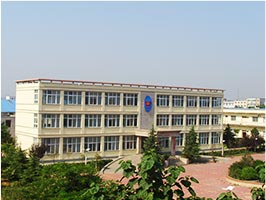Research description of boron-free ramming mass materials for induction furnace 无硼捣打料研究说明
Research description of boron-free ramming mass materials for induction furnace
The main failure forms of furnace lining mainly include the following:
1. Thermal stress cracking, furnace lining in the use process of use, the lining contacts high temperature metal liquid, the outer layer is close to the water cooling coil, the temperature difference is huge, after the periodic cold and heat cycle, cause volume expansion and contraction, easy to lead to the furnace lining thermal stress cracking, expansion and peeling phenomenon.
2. Chemical erosion, C and FeO in steel water form a chemical reaction with the furnace lining at high temperature, SIO2 + 2C —> SI + 2CO, SIO2 is reduced by C; FEO and SIO2 to FEO.SIO2 low melt at about 1170 degrees, quickly separated from the furnace lining under the stirring of high temperature steel water.
3, Electromagnetic mixing and local overheating caused by mechanical erosion, furnace lining is in the process of steel water contact, local may appear a series of chemical and physical reaction, cause local overheating, form local liquid phase, in electromagnetic stirring, and steel water erosion process, easy to form furnace lining defect, cracking, in cracking and defect is prone to appear furnace lining rapid consumption, peeling phenomenon.
At the same time, in the process of feeding, the large new material may collide with the furnace lining production, forming partial damage in the sintering layer of the furnace lining.
Under the action of electromagnetic stirring, the molten steel is easy to form a chemical chain reaction at the new section and crack of the furnace lining, coupled with the influence of thermal stress, affecting the life of the furnace lining.
Comparison with the traditional boron-containing furnace material:
The melting point of B2O3 is 450℃, and B2O3 has a great impact on the melting temperature of SiO2. With about 5%B2O3 added, the melting point drops to 1482℃ (the theoretical refractory degree of quartz sand is 1750℃);
The low comelting temperature of B2O3 with SiO2 is only 372℃. Therefore, with B2O3 as a silicon-based dry material sintering agent, at 372℃ will appear in the liquid phase, sintering. Because the quartz glass viscosity is about 2106Pa · s at 1730℃; although the viscosity of B2O3 is not large, B2O3 itself is a glass network structure formation; adding a small amount of B2O3 to SiO2 may not cause great damage to the network structure of SiO2 glass, thus affecting the viscosity of SiO2 melt. Therefore, when the silicon dry tamping material uses boron-containing sintering agent as the sintering agent, it can not only make the silicon dry material working surface sintering at a low temperature, but also ensure that the working face is a high viscosity layer when used at high temperature. High viscous working face is advantageous against the erosion, penetration and erosion of metal melt. From the exterior surface, is the boron sintering agent of silicon tamping and steel water contact surface form glass phase sintering layer, and sintering effect is excellent, and to a certain extent, boron can alleviate the quartz range volume expansion, effectively avoid the working lining in the low temperature range strength is low, due to the rapid, more significant volume stress, bulge, minimize the stomatal rate of the furnace lining, become the best burner of silicon material.
We are also based on the market demand, Together with Wuhan University of Science and Technology, Northeastern University, Zhengzhou University from 2018-2022, At the same time, according to the field experiment situation feedback, Boron-free tamping materials are used in the middle and late stages, Sudden capacity expansion phenomenon, A targeted analysis was performed, It is believed that the situation is due to the thin sintering layer of the material working face, Low glass phase thickness, In long time scouring and electromagnetic stirring, attack, In addition, the original sintering layer is damaged under the comprehensive action of thermal stress, The posterior semi-sintering layer has a lower sintering strength, Not scour our, Lead to the later capacity expansion speed is relatively fast, In this case, the laboratory has been optimized and improved, The sintering strength and erosion resistance of the material are improved. The test indexes are as follows:
project
Original materials used
Optimize the experimental index
MOR
4.6
7.2
7.6
9.7
CCS
15.04
22.71
22.43
19.78
Note:
Resistance strength refers to the ultimate breaking stress when the material per unit area bears the bending moment. Also known as flexural strength, fracture modulus. Usually refers to the limit stress when the refractory clay or ceramic material is damaged by the action of bending load.
Compressive strength: the ultimate load that the refractory can withstand per unit area at a certain temperature. Compressive strength is one of the important performance indicators to measure the quality of refractory materials, which indirectly reflects the tissue structure of the products, such as compactness, uniformity, sintering properties, etc.
无硼捣打料研究说明
炉衬主要的失效形式主要包括以下几种:
1 ,热应力开裂,炉衬在使用过程中,内衬接触高温金属液体,外层紧贴水冷线圈,内外温差巨大,经过周期性冷热循环作用,引起体积膨胀与收缩,容易导致炉衬产生热应力开裂,膨胀剥落现象。
2 ,化学侵蚀,钢水中的C和FeO 在高温下与炉衬形成一下化学反应,SIO2+2C —— > SI + 2CO , SIO2被C还原 ; FEO与SIO2 在1170度左右形成FEO.SIO2的低熔物,在高温钢水的搅拌作用下,快速脱离炉衬。
3 ,电磁搅拌和局部过热引起的机械侵蚀,炉衬在于钢水接触过程中,局部可能出现一系列化学以及物理反应,造成局部过热,形成局部液相,在电磁搅拌,以及钢水冲刷过程中,易形成炉衬缺损,开裂,在开裂以及缺损部位容易出现炉衬快速消耗,出现剥落现象。
同时在加料过程中,大块新料可能跟炉衬生产硬性撞击,在炉衬烧结层形成局部破损。
钢水在电磁搅拌作用下,容易在炉衬新的断面和裂缝处形成化学链式反应,加之热应力影响,对炉衬寿命形成影响。
与传统含硼炉料对比:
B2O3熔点为450℃,B2O3对SiO2的熔化温度影响很大,加入约5%B2O3,其熔点下降至1482℃(石英砂理论耐火度1750℃);
B2O3与SiO2形成的低共熔点温度仅为372℃。因此以B2O3做硅质干式料的烧结剂,在372℃就会出现液相,进行烧结。由于石英玻璃黏度很大,在1730℃大约为2×106Pa·s;B2O3的黏度虽不大,但B2O3本身是玻璃网络结构形成物;将少量B2O3加入到SiO2中,可能对SiO2玻璃的网络结构不会造成大的破坏,从而影响SiO2熔体的黏度。因此,硅质干式捣打料采用含硼烧结剂做烧结剂时,既能使硅质干式料工作面在较低温度进行烧结,又能保证在高温使用时工作面为一高黏滞性层。高黏滞性工作面对抗金属熔体的侵蚀、渗透与冲刷都是有利的。从外观表面上看,就是有硼烧结剂的硅质捣打料与钢水接触的表面形成玻璃相烧结层,且烧结效果极好 ,同时硼可以在一定程度上缓解石英中低温度范围内因快速重建型晶型转变造成的体积膨胀,有效避免工作衬在中低温范围内强度较低时,因迅速的、较为显著的体积应力而形成的体积变化,鼓包,最大限度的减少了炉衬的自身气孔率,成为硅质材料的最佳助烧剂。
我们也根据市场需求,与武汉科技大学,东北大学,郑州大学从2018-2022年期间先后几次对无硼硅质捣打料进行了课题研究,同时根据现场实验情况反馈,无硼捣打料在使用到中后期时,突然出现扩容现象,进行了针对性分析,认为该情况是由于材料工作面烧结层较薄,玻璃相厚度低,在钢水长时间冲刷以及电磁搅拌作用,化学侵蚀,加之热应力的综合作用下对原有烧结层损坏,后面的半烧结层烧结强度较低,不耐冲刷,导致后期扩容速度较快,针对此种情况实验室进行了优化调整改进,使材料的烧结强度及耐冲刷性得到提升。
MOR
4.6
7.2
7.6
9.7
CCS
15.04
22.71
22.43
19.78
Note:
Resistance strength refers to the ultimate breaking stress when the material per unit area bears the bending moment. Also known as flexural strength, fracture modulus. Usually refers to the limit stress when the refractory clay or ceramic material is damaged by the action of bending load.
Compressive strength: the ultimate load that the refractory can withstand per unit area at a certain temperature. Compressive strength is one of the important performance indicators to measure the quality of refractory materials, which indirectly reflects the tissue structure of the products, such as compactness, uniformity, sintering properties, etc.
河南宏达炉业
河南省功能不定形材料研究中心
2022年8月4日



